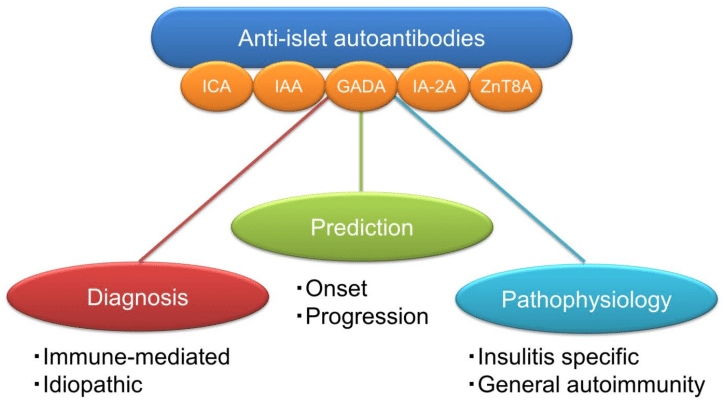NAA Services for Anti-Islet Cell Cytoplasmic
As an acknowledged antibody service provider, Creative Biolabs can offer various NAA services to help our customers obtain ideal laboratory test results contributing to your research and projects successfully. Currently, we are able to provide a full range of anti-islet cell cytoplasmic antibodies marker services for diseases diagnosis and therapeutic monitoring. Our professional and technical scientists can give our clients highly sensitive and qualified products.
Background of Islet Cell Cytoplasmic Autoantibodies
Islet cell cytoplasmic autoantibodies (ICAs) were first described in 1974 by Bottazzo and colleagues in patients with polyglandular autoimmunity. Later, ICAs were found in type 1 diabetes (T1D) patients in the absence of polyglandular autoimmunity. In the majority of cases, these T1D individuals carry circulating ICAs and/or insulin autoantibodies (IAA). ICAs are the most difficult islet autoantibodies to detect because the determinations of ICAs are subject to variations in the pancreatic tissue, conjugate, incubation times, humidity, and biological-scientist interpretation. The measurement process is also very labor-intensive. ICAs can be measured as early as eight years prior to the clinical onset of insulin-dependent diabetes mellitus (IDDM) and thus can be used as an early indicator of the disease.
The Role of Anti-islet Cell Cytoplasmic in Type 1 Diabetes
IDDM or T1D is a debilitating chronic disease that impairs production and secretion of the insulin and alters blood sugar metabolism. Insulin is produced by pancreatic islet cells or Islets of Langerhans. The disruption of insulin synthesis is caused by immunological destruction of the islet cells by autoantibodies in T1D patients. Patients who are ICA-positive may indicate a progressive loss of the islet cell function as shown by disruption of the early-phase insulin release. When this early phase insulin release stops completely, obvious IDDM develops clinically. ICAs can be detected in 70% to 80% of individuals with new-onset T1D. Following diagnosis, ICAs positivity declines within 10 years. Many studies have confirmed that the presence of ICAs in non-diabetic individuals predicts the development of T1D. Thus, ICAs can be used for the selection of high-risk subjects for early therapeutic intervention trials.
 Fig.1 Clinical utilities of ICA in patients with diabetes.1
Fig.1 Clinical utilities of ICA in patients with diabetes.1
What We Can Do about NAA?
ICAs are associated with T1D and may be present years before the onset of clinical symptoms. With first-rate technology platforms and prominent scientists, we can offer a variety of NAA services include NAA detection, NAA profiling, NAA affinity measurement, NAA epitope mapping, and paratope mapping. A wide range of ICAs is available for your choice.
Features of Our Services
- First-rate platform
- Seasoned experts
- High efficiency and timely
- Cost-effective service
- Good after-sales service
Creative Biolabs provides various high-affinity antibody detection services for T1D marker to facilitate our client's research and project development. In addition to the well-established NAA services, our expertise also enables us to provide specific services to meet every customer's needs. For more details and information, please feel free to contact us.
Reference
- Kawasaki, Eiji. "Anti-Islet Autoantibodies in Type 1 Diabetes." International Journal of Molecular Sciences 24.12 (2023): 10012.
Related Services:
- NAA Services for Anti-GAD65
- NAA Services for Anti-Insulinoma-Associated-2 (IA-2)
- NAA Services for Anti-Insulin

